
- Index
- Brand
- A.m. Ranch (20)
- Autojare (28)
- Best Barns (23)
- Cartier (34)
- Coocheer (19)
- Dewalt (60)
- Evolution (23)
- Exotic Wood Zone (82)
- Handmade (206)
- Jk Vinyl And Wood (122)
- John Boos (55)
- Makita (40)
- Max-craft (23)
- Milwaukee (170)
- Omtech (55)
- Ridgeyard (22)
- Undisclosed (19)
- Vevor (22)
- Victus (67)
- Wen (19)
- Other (2476)
- Features
- Adjustable (6)
- Adjustable Grip (6)
- Anti-kickback (10)
- Antimicrobial (6)
- Chain Brake (5)
- Chainsaws (17)
- Cordless (28)
- Easy Clean (47)
- Grooved (6)
- Hand Wash Only (26)
- Heavy Duty (7)
- Kit (18)
- Laser Cut (23)
- Not Painted (6)
- Reversible (21)
- Rimless (9)
- Rimless, Diamond Cut (6)
- Sheath Included (6)
- Signed (9)
- Unfinished (4)
- Other (3319)
- Power
- Power Source
- Shape
- Type
- Band Saw (75)
- Blackwood (35)
- Butcher Block (21)
- Chainsaw (117)
- Circular Saw (124)
- Cut Board (69)
- Cutting Board (283)
- Cutting Boards (42)
- Decorative Balls (19)
- Engraving Machine (150)
- Gas Chainsaw (27)
- House (26)
- Katana (61)
- Live Edge Wood (46)
- Miter Saw (24)
- Replacement Lens (19)
- Table Saw (38)
- Top Handle Chainsaw (42)
- Wood (20)
- Wood Pieces (27)
- Other (2320)
103CM Clay Tempered 1095 Steel Katana Japanese Samurai Sharp Sword Cut Bamboo
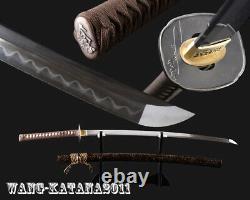

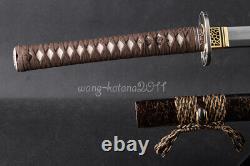
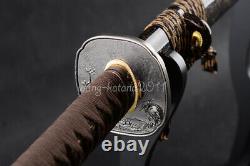
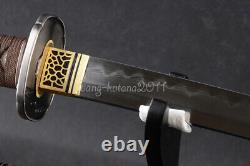
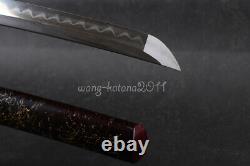
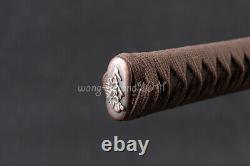
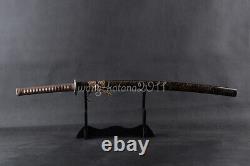
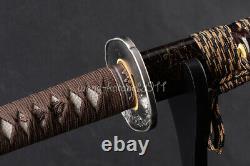
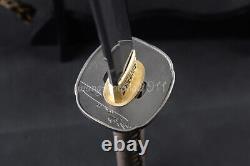
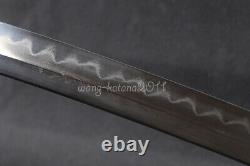
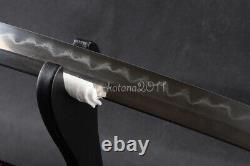


103CM Clay Tempered 1095 Steel Katana Japanese Samurai Sharp Sword Cut Bamboo. Blade thickness: 0.7cm/0.28inch. Blade width: 3.2cm/1.26inch. Blade Material: 1095 carbon folded steel , clay tempered. Sharpness: Cut bamboo / paper.
Other fittings: Brass habaki & seppa + Alloy fuchi & kashira &. Tsuka-ito is the wrapping of the tsuka and sageo (or) is a hanging cord that is passed through the hole in the kurigata of a Japanese sword's saya. Samegawais the ray or shark skin wrapping of the tsuka (handle/hilt).
The saya is a wooden scabbard for the blade; traditionally done in lacquered wood. For engraving English words, Chinese characters and Japanese Kanji.
For engraving patterns dragon, lion, etc. We can add or remove the machine-made wavy hamon for free. Usually thought be used for bloodletting only.
It is also used to lighten the weight of the sword. We can add or remove Bo-hi for free. Most of our blades are sharp. We can also make the blade. For free if you require.
The price varies from different swords. After the blade has been shaped, the sword would be quenched. We quench our swords in either water or oil. Water quenching produces a tougher edge which can also be hardened further more using clay. Blades quenched in oil are still considerably hardened and do have superior flexibility compared to a water quenched blade.
In the forging process , the most useful process is the folding, where the metals are forge welded, folded, and welded again, as many as 16 times. The folding removes impurities and helps even out the carbon content, while the alternating layers combine hardness with ductility to greatly enhance the toughness. The less impurities, the harder and sharper the blade will be. We have done cutting tests on the blades.
It can cut bamboo(young bamboo tree). Grass mattings and slice paper(The blade should be tilted at 45 degrees). To maximize both the cutting edge and the resilience of the sword spine, a technique of differential heat-treatment is used. The sword is painted with layers of clay before heating, providing a thin layer or none at all on the edge of the sword, ensuring quick cooling to maximize the hardening for the edge. A thicker layer of clay is applied to the rest of the blade, causing slower cooling. This creates softer, more resilient steel, allowing the blade to absorb shock without breaking.The best quality of high carbon steel is at 1095, the carbon content was 1.03%, and the element contains a small amount of chromium, molybdenum, vanadium, after heat treatment can reach HRc58-60 hardness, toughness is very good, but not resistant to rust, more be applied to traditional european-style hunting knife, large cutting knife and military dao. Such as the United States during world war ii "KA - BAR" saber is in 1095 as the blade material.
The vast majority of modern katana and. Wakizashi are the maru type which is the most basic.
With the entire sword being composed of a single steel. The kobuse type is made using two steels, which are called hagane (edge steel). Steel of different materials is forged and welded together to hammer the basic shape of the sword.
This allows the overall blade to have a higher toughness and. Absorb a lot of impact.Reducing the possibility of breaking or bending to some extent. Makes the blade not only has high hardness, but also has super toughness. We have our own sword-casting factory. The factory is located in Longquan, a small town with a long history of sword-casting in China. Most of the famous Swords in China are made there.
Rich raw materials, skilled technology, traditional sword casting technology from generation to generation. The traditional way of making sword by hand. F you have any problem after recieve the package wrong size, wrong style, etc. We always provide you with the best after-sales service.Ive us a chance to help you before you give us a bad feedback. The item "103CM Clay Tempered 1095 Steel Katana Japanese Samurai Sharp Sword Cut Bamboo" is in sale since Saturday, October 31, 2020. This item is in the category "Collectibles\Knives, Swords & Blades\Swords & Sabers\Asian\Japanese".
The seller is "wang-katana2011" and is located in Longquan, Zhejiang. This item can be shipped worldwide.
- Type: Katana
- Edge: Single
- Handle Material: Wood
- Tang: Full
- Handedness: Single-Handed
- Blade Material: Carbon Steel
- Dexterity: Right-Handed
- Authenticity: Original
- Theme: Samurai
- Style: Japanese

